How to develop a marketing strategy for expanding globally
Globalisation is no longer an obscure term reserved for academics: it is a very real and ever growing phenomenon affecting most people and businesses all over the world. In the digital arena, this means that a company’s website also needs to be a part of the global mix. If you’d like to focus on trading and exporting your products and services worldwide, you need to have a solid international digital marketing strategy in place.
The aim of this post is to highlight a wide range of considerations that need to be addressed in order to tailor your strategy to a global target market. The areas that will be focused on are: website design, international SEO, international PPC and international social media marketing.
International Digital Marketing Considerations
Before looking into the international best practices of each of these areas, there are some important points to bear in mind before starting to develop any global strategy:
Market Research
Is there even a market for your product or service in the country or countries you are hoping to expand into? I know it seems like a pretty straightforward and somewhat condescending question, but after all, if you don’t ask it, you’re going to be in some serious trouble. And you’d be surprised how many businesses just fancy having an Italian office on the Riviera, without considering whether people actually want or need their products.
Competitor research is also crucial. Check out the potential local competition: what they do, how they market themselves and why you think your product, service or promise is better than theirs. If it’s not, make it so.
Use their techniques as a springboard that you will build upon with a better website, better USPs, and a better overall digital strategy.
Logistically, are you ready?
Another key question that you need to be able to answer is whether or not you are actually ready to start trading locally: no matter how good your site is, no matter how visible it is in search engines, you’re going to have a terrible time if you don’t have the right infrastructure in place to actually handle enquiries, calls or business prospects in a new language and territory.
Whatever your strategy, make sure that you have the appropriate local distributors, or local phone numbers (with native speakers answering the phones). Make sure your online enquiries are being responded to in a timely fashion, that your international delivery times are efficient, and so on.
Messaging and Translation
Depending on your background, you may or may not fully understand the implications of speaking a foreign language and the extremely personal significance that this can have on an individual’s personality, perception of the world and of themselves. If you don’t believe me, I dare you to call someone from Valencia, Spanish.
With regard to language, there are a few mistakes that you want to avoid at all costs:
1. Having your foreign market websites in English
Set the scene, it’s winter, you really want some warm socks. You go to your favourite search engine, search for “warm winter socks”, click on a link and get redirected to a website that you only partially understand – or worse, don’t understand at all. After a pretty reasonable and inauspicious search, you suddenly find yourself perplexed, sockless and with your intellect being challenged.
Avoid this mistake at all costs. If you want to advertise to people, you’re going to need to speak their language. Again, this might seem obvious, but I have seen and worked with companies who made this mistake.
2. Relying on Google Translate
Google’s seemingly inexhaustible range of tools is incredibly useful. However, although Google translate might be great on the odd occasion that you need to ask for directions to the train station in a broken tongue, literal translations are not going to work for international digital marketing strategies.
If you’re going to try to sell to a foreign country, literally translating the content on your site will not work. It won’t semantically make sense to locals. Sometimes, Google translate just plain doesn’t work:
There are a myriad of examples that highlight the potential pitfalls of relying on Google Translate – take a look at this brilliant video by Elan.
3. Don’t translate, localise
Simple translations, as highlighted above, can lead to some downright embarrassing situations.
Think about it: in your local market you try to make your content as engaging and compelling as possible in order to encourage your audience to buy your products or services. You need to communicate your value to them in their own terms. This language is not universal: the struggles that your country’s market face will not be the same in Russia, Switzerland or Morocco. You need to understand their culture, their struggles and speak to them in a way that makes them feel at ease and that appeals to them.
Think about your core promise: what do you want your customers to feel when they come to your site? Understood, valued, at ease? Or do you want/need to convey a sense of urgency in your marketing messages? Does this work in other languages and cultures? Is the language powerful and contextually relevant enough?
Hiring a translation company that works with native speakers to translate your content is highly recommended. Not only will they get the language right, they’ll have an inkling of the messages that are more appealing to their countrymen. This is again where competitor research can help.
Cultural considerations
On top of the language spoken by your target market, you need to think about cultural factors that may be of vital importance for you to operate in certain areas.
Who do you want to sell to? Does this match the online population of that country?
Let me explain. Imagine you want to sell to a more mature audience of 50+. However, in the country that you’d like to advertise in, 85% internet searches are performed by 16-35 year olds. Suddenly, throwing a huge budget toward online advertising may not seem like a great idea.
Other cultural factors are also influential, such as history. This article argues that the continued effects of the Iron Curtain might make it difficult to advertise in East Germany. Every country, and even region or city, has its own history. Ensure that your market is buying online before creating a website that may end up not being used.
Additionally you need to think about the people that you might be dealing with and their problems. In some industries in the UK, the main decision makers and influencers that you deal with may primarily be senior management or sales directors. Meanwhile, in the same industry in the Middle East, you may need to engage primarily with up and coming SMEs or independent distributors, who act as agents for larger companies.
At this point, you need to ask yourself: do these differing international personas have the same motivations and frustrations? Will they respond similarly to your USPs and business promises? Are you solving their particular problems? Do these customers prefer to conduct their business face to face, or is a simple brochure download enough?
You can get around this by conducting your own research online, or with interviews/surveys, as well as asking any regional partners about their thoughts on the matter.
Although this seems like an awful lot of research and work, believe me, it will pay off. International websites are expensive: if you get it right the first time, you’ve saved yourself a lot of money and avoided future difficulties.
International Web Design Considerations
Website design and design preferences can be heavily impacted by cultural and linguistic factors.
The visuals
Your website’s design must take into account the average length of words and length of sentences in a country. For instance, the German language has some very long words, with special characters that need to look right on the page, and sentence structures that need to be just so in order to mean something.
In terms of design, this would mean avoiding tight layouts and smaller fonts, and making sure that your mobile design allows for plenty of room for your text.
Even your font choice needs to be carefully considered, as special characters are not necessarily fully supported by all of them.
Finally, photography on your website is a powerful component of good user experience, as well as a crucial factor in conveying your brand messages. Choose images that will speak to your international audience: are your images culturally sensitive? Are they diverse enough? Can your audience identify to them? Do they reflect your localised core messages? Are they engaging to the personas you are trying to target?
The layout
With a bit of research you can see the types of websites that work well in a country. For instance, to a Western market, websites in Asia have typically been described as looking overly “busy”. Then again, in Asia they might be asking themselves why on earth Western websites are so “empty”.
Regardless of the reasoning behind different cultural design preferences, it’s very important to be aware of them when designing your site for an international market.
International SEO
International SEO is a pretty technical topic that a lot of people tend to shy away from, thinking that it’s too complex. However, it is fundamental to get it right: there’s no use in paying for a website to be built to target a certain country (or countries) and not have it appear in their search engines.
Here is my attempt at simplifying this topic for you. Hopefully this section will help to demystify some of the more technical aspects for you to help you decide what needs to be done on your site.
Preliminary considerations
If you do not tell them, search engines do not know that you are trying to target a specific country. It is not enough to simply write your content in a certain language. You need to
explicitly guide search engine crawlers to your country or language specific content in order for it to be indexed in more than one region.
Searches are not universal: your products or services won’t necessarily return the same amount of searches in other languages or countries. This is why competitor and keyword research is essential.
Furthermore, Google is not necessarily the main search engine in every country (although it is in a lot of them):
In China, Baidu dominates the market rather than Google. In Russia, the market leader is Yandex. Interestingly, due to the region’s history, some Eastern European countries use both. You may find that in certain countries the market for paid advertising on Google is saturated and therefore very expensive – but Bing may turn out to be a good alternative.
Understanding that you’ll need to spend time sending specific signals to search engines (possibly not the ones that you were expecting), and having a general idea of the amount of traffic that will be coming to your site is important. This will help you to start planning for the time, money and effort that needs to be spent on your website(s).
If you’re going to do international SEO you need to be organised and you need to do it right the first time.
Website Structure Choices
When building websites for international markets, you have 3 main choices of website structure to choose from: country-coded top-level domains (ccTLDs), subdomains and subdirectories.
CCTLDs
This option requires you to buy country-coded top-level domains that are tied to each specific target country (for instance www.example.fr).
It sends the strongest geo-targeting signals to search engines and means that your server location becomes less of an issue. It also establishes trust in both search engines (there is no doubt that you are aiming to target a specific country) and people (if people see that a domain contains their country code, there’s no doubt that they’ll know that your services are available to them).
I’d highly recommend this strategy if you are only considering having 2 or 3 ccTLDs - any more and it will soon run up some pretty huge costs (buying each domain, hosting each domain, server locations etc - a bit of a logistical nightmare if you’re trying to handle 15 sites).
However, there are also some cons: as just mentioned if you’re trying to target more than a couple of countries, it can be a pull on your resources, and a costly option. Furthermore, the domains might not be available.
Finally, it means that your domain authority is going to be split between each site: which means even more work in terms of link building - if you don’t have a digital marketing team who is hot on this topic, I’d avoid this option.
Subdomains
This means using a generic Top Level Domain Name (gTLD), with a country (or language) specific subdomain. For example: http://fr.example.com.
There are a number of benefits: they are easy to set up, this option offer for hosting flexibility and send the right geo-targeting signals to search engines. However, this option does also limit you as they are less trustworthy (to customers) and also split your domain authority (like the first option).
Subdirectories
This means using gTLD with a country or language specific subdirectory. For example: http://www.example.com/fr
If you are targeting countries where more than one language is spoken you will need a structure that includes both country and language subdirectories.
This option is particularly good for consolidating all of your link building efforts (the domain authority isn’t split between multiple domains), it’s easy to set up. Unfortunately, it doesn’t send quite as strong signal to search engines as to the location of your site, but this can be corrected by indicating in Google Search Console, Bing Webmaster tools, using schema and with citation building for each subdirectory.
Some other cons: there is only one single server location, and also begs the question as to what you include n the domain’s homepage (hw to send strong signals to show that your site is international).
Personally, if I were to choose I’d go for the following options.
- CCTLDs if I were only trying to target 2/3 countries
- Sub Domains if I’m trying to target more global markets as it’s easy to set up and means that you don’t have to carry out link building for 15 different sites. Huge players like Apple, Samsung and H & M do this.
Once you’ve settled on a website structure and translated your content effectively, you’ll need to start doing keyword research.
International Keyword Research
Again, remember not to work with literal translations, they won’t always be relevant and may not be the terms that people are searching for in your target country.
Start by translating and localising your current keywords and do some competitor research to see what terms they might be using. A great tool for this is SemRush, which can be used to see the terms that your competitors are ranking organically for or advertising with online:
This will enable you to come up with a preliminary list of terms. Then use the relevant keyword planner or tool to broaden your keyword lists and see which terms get searched for (remember to correctly set the language and location setting when searching):
- Google AdWords Keyword Planner
- Bing Ads Keyword Planner
- Yandex Keyword Statistics
- Baidu Index
Pick the optimum keywords for your selected landing pages, optimise them and the translated content. In order to do this, here is a comprehensive guide on keyword research by ahrefs, as well as a helpful SEO checklist.
You can use Authority Labs to track your international rankings to track your progress:
Technical Signals
The following technical signals must be put in place on your international sites in order for search engines to completely understand what languages and locations your sites are trying to target: the better they understand this, the easier they can serve your sites to the relevant people.
1. HrefLang Tags
These tag allow you to cross reference pages with similar content for different audiences (as an example, they tell search engines that although the content may be similar, one page or set of pages are for French speakers in France, while others are for French speakers in Canada and other ones are to be serve to Spanish speakers in Chile).
These links enable you to find the relevant codes for both language & country.
The tags are added to the <head> of your website (as well as the self referencing ones). This is what they should look like:
And here are the tools to help you create them:
hreflang tags generator tool
hreflang XML sitemap generator
If done properly, once the sites are added to Google Search Console, it will tell you whether or not they are working. If they are not, it should give you an indication as to why they are not.
2. Meta Content Language Tags
These indicate the language and country in the <head> section of web pages, thus indicating to search engines the target audience for the page. Such as:
<meta http-equiv=“content-language” content=“en-us”>
3. X Default Tag
This tag signals pages that don’t target a specific language or territory, and thus tells them to refer to the “default” page. This is what this looks like:
4. Schema Markup
Adding schema markup is a great way of indicating to search engines what your website is about. Schema markup is a collaboratively created, universal language that all top search engines in the world use to easily understand websites.
With Google Tag Manager, markup each specific subdomain (or ccTLD) with Organization and LocalBusiness markup to tell them where that part of the business operates. Here’s how to do just that. An added bonus is that schema is also a ranking factor and can help the knowledge panel to be displayed in local search results for your business.
Geo-targeting
On your website, and in your website’s code, you have now implemented all the relevant signals: an international site structure, language specific content that is optimised following specific keyword research and competitor analysis, all the necessary tags, localised content, tone of voice, imagery and call to actions.
Unfortunately, the job is not over, you now need to tell search engines what to do with your site. You should have Google Analytics installed for each property and each property needs to be added to Google Search Console and Bing Webmaster Tools.
You can track all domains, (or sub-domains and subdirectories) separately in both Analytics and Search Console like so:
Analytics:
Search Console
To do this:
You can geo-target your site using your website structure. Set specific properties in Google Search Console & Bing Webmaster Tools:
Then, within Search Console, make sure that your HrefLang tags are working:
And that your international country targeting is correct:
(if you’ve used ccTLDs this will automatically be detected).
This is where to look for the same settings in Bing Webmaster Tools:
And here is where you select the location to target:
Once all of this on page work is done, you need to work on off page signals. In particular: domain authority.
International Link Building
This is essential, in particular for websites structured with ccTLDs and sub-domains.
Link building will help to promote your international website, drive relevant local referral traffic as well as build domain authority, which will help with the visibility of your international website in search engines. So, some things to consider:
- local citation building
- Competitor research, as well as general research, can help you to find websites relevant to your market, that can show you interesting types of content that you can also create.
- it can also help you to understand cultural factors within your target market & build relationships with local influencers and media
You can use BuzzSumo to discover what topics and types of content work best in your target market (and also see what has worked well for competitors):
Use this research to help build up your own content strategy. Create attractive and optimised content for your audience (about your products, services, long tail search queries such as FAQs and blog posts), which will then earn you links.
SEO is a long term strategy, and will only work if you dedicate time to it - make sure that each country has it’s on unique strategy as a one-size-fits-all approach will not be suitable.
International PPC
While you’re waiting for your international website to start ranking against local competitors, it may be worth trying out international PPC to hit the ground running.
Standard paid advertising rules all hold true in foreign markets: you’ll still have to think about changing CPCs, quality scores, your average ad positions, and sending your visitors to relevant landing pages.
However, international PPC campaigns also have their own specificities that you cannot ignore. These go much further than simply asking yourself “how to use Adwords”, and demand excellent knowledge of a country’s search behaviour.
Good Market Knowledge
As mentioned previously, knowing your target market is essential, hence the preliminary research you conduct before anything else when developing an international digital marketing strategy.
With regard to international PPC campaigns, this specifically means looking at:
Dominant Search Engines
These could be Google, Bing, Yandex, Baidu etc - if your target market is saturated in Google, Bing could be a good option. This research will help you to figure out budgets, the scope of the project, what platforms to familiarise yourself with, and so on.
Target Audience
Are the people you want to advertise to, the people who are buying online?
Cultural Habits
As mentioned, these affect web design, as well as advertising.
For instance, if you are trying to sell to a Chinese market, it’s important to know that the colour of wrapping paper holds its own special significance: red is reserved for gifts, yellow paper with black ink is reserved for parting presents for the dead.
Either way, the fancy new wrapping paper that went down a storm in the UK might not elsewhere, so make sure you know that you won’t accidentally offend anyone.
Competitor Landscape
IT may well be the case that the paid market on AdWords for your industry has been saturated, making CPCs very high, in which case you may not be able to participate due to your budget restrictions.
Cost Per Clicks
Although there is no exact science to this (as it depends on industries, market saturation, your competition etc), it’s good to get a benchmark on CPCs. Wordstream wrote an article containing average CPC by country. It also lists the most expensive regions in the world.
How to Structure Your International PPC Campaigns
Targeting multiple countries with multiple budgets and trying to measure ROI in each region means one thing: you have to be meticulously organised.
Create Country Specific Accounts
This is by far the easiest way to measure the performance of your country specific campaigns (and is also useful as currencies can only be set at account level).
Language Specific Campaigns
I would highly recommend having separate campaigns for different languages.
So if you have an account set up for Switzerland, you can then set each campaign to target a specific language (in this case French, Italian, German and I’d also recommend English). This means that you can add specific language and geographic settings, bid adjustments, extensions etc. It also enables you to easily add keywords or ads in specific languages. This means that everything is kept pretty simple and extremely organised.
It’s useful to note that AdWords allows for extra characters in ad titles and descriptions that target certain Asian or Eastern European countries – find out more about this here.
The key to international PPC is consistency: you need to have a Danish campaign targeting the Danish language in Denmark, that uses Danish keywords to trigger Danish ads that lead to a Danish website.
As a side note: it may be worth testing out an English campaign, regardless of the country that you want to target. This allows you to reach English people living abroad: this may or may not work, but it’s always worth testing out, particularly as a lot of businesses in Europe conduct business in English.
Time Zones & Currencies
Remember time zones in order to set ad schedules and to set your bid adjustments. When targeting a country with multiple time zones, create a separate campaign for each time zone as it’ll make your life easier in the long run.
International Social Media Tips and Considerations
Social media marketing takes up a lot of time and requires you to proactively engage with your audience and also be on the ball in finding and identifying trends.
The first question you need to ask yourself is this: are you going to have one social media profile per platform, or a profile per country. This depends entirely on your resources, the amount of people available to help with it (and whether they know what they are doing, have a strategy in place and the time to do it).
These decisions are entirely up to you and your business. Two things I would definitely recommend thinking about are:
- if you are going to have separate profiles per country, make sure that they are active and all carry your brand message. It may be worth taking the time to write out a brief, explaining to the social media manager in each country what they can and cannot say or do on social media. You want consistency in messaging and in your brand values.
- if you opt for the option of having 1 profile that you will use internationally do not post the same post multiple times in the same language. It looks unprofessional, counts as duplicate content and will not reach the right people. If you’re going to use 1 profile universally, make sure that you are an expert in each social media platform’s language and geotargeting options. Your French post should only be seen and advertised in France, not in Spain or it will disillusion your Spanish customers.
Other considerations
Just as search engines vary in different countries, unfortunately so do social media platforms. You need to research social media platform usage before you try to advertise. We all know that Facebook is not available in China, for instance.
Luckily, We Are Social did an in-depth research report (over 500 slides), that provides a huge amount of country specific data on social media usage in most countries - check out your specific target market, what channels they are using and familiarise yourself with them.
Whatever platform you choose to use, make sure that you are regularly posting interesting relevant content (as part of your international content marketing and link building SEO strategy) that your audience wants to read and will share.
You should also use Hootsuite to monitor mentions of your brand in each country and respond. It will also help you to ensure that your content is being seen (or not) by relevant accounts and thus enable you to tailor your strategy further
Although there seems to be a lot of stuff to consider to reach international audiences, most of it comes down to common sense so do not let this post intimidate you. The main things to remember are:
- organisation and planning are key
- you must be thorough the first time round (or you will have a lot of patchy fixes to carry out)
Good luck!
from Blog – Smart Insights http://www.smartinsights.com/online-brand-strategy/international-marketing/develop-international-digital-marketing-strategy/
via Tumblr http://euro3plast-fr.tumblr.com/post/155291817384

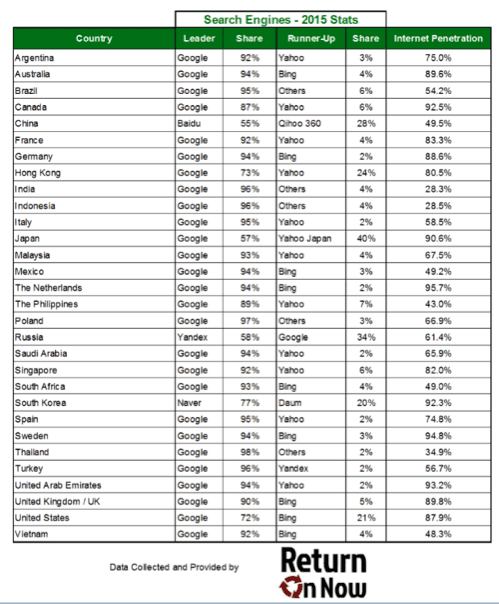

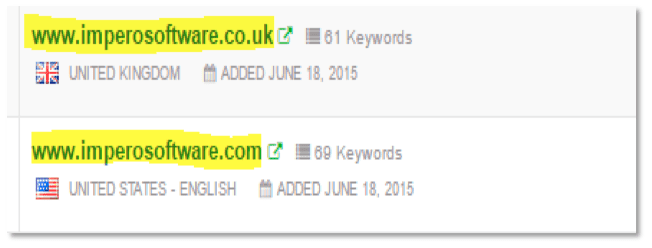





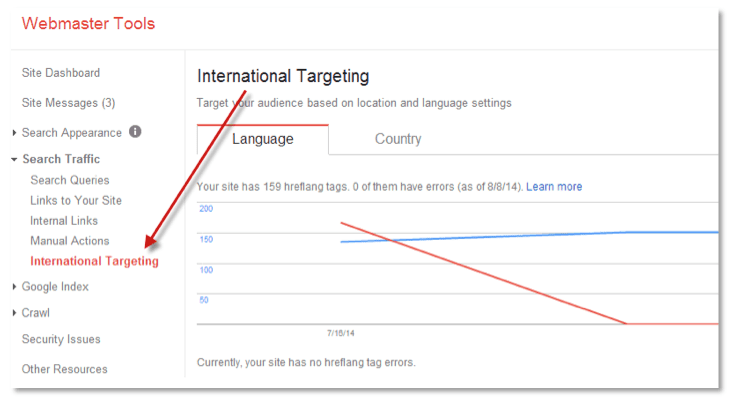

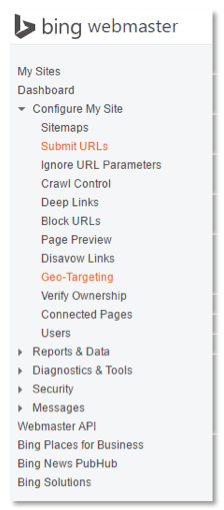
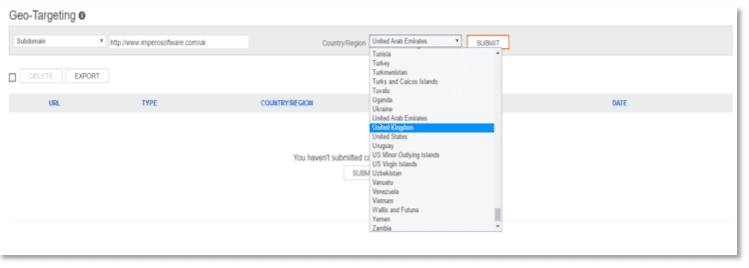
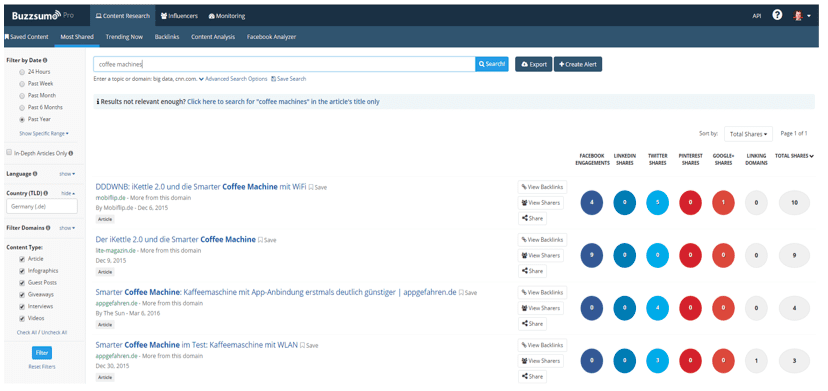
 Thanks to
Thanks to
No comments:
Post a Comment